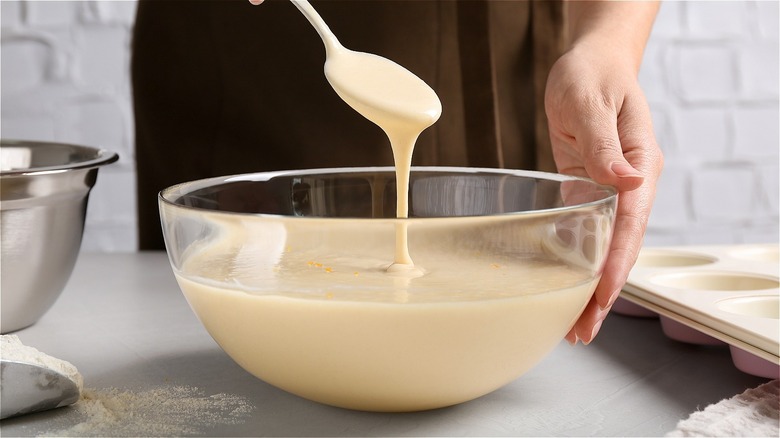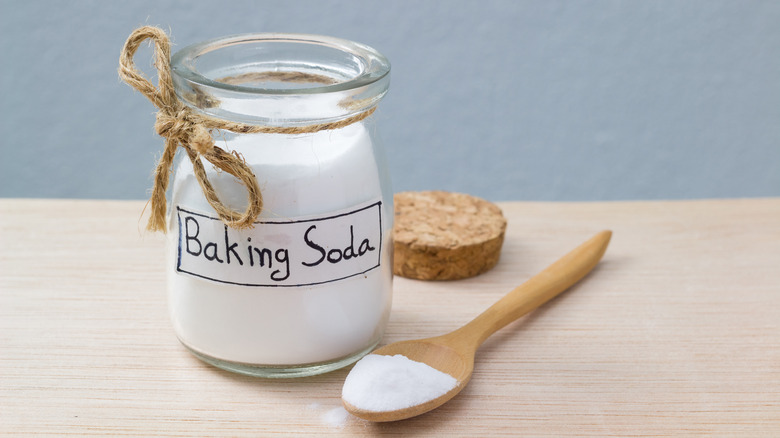The Recipe Mistake That Is Ruining Your Doubled Baking Recipes
Although harsh, "Do as you're told" is an excellent rule to follow when baking. The science behind getting cakes to rise and cookies to spread is too precise to ignore a recipe — unlike with other types of cooking, which afford you more of a creative license. Every detail, from preheating the oven and properly measuring ingredients to bringing the ingredients to room temperature, is spelled out for a reason and shouldn't be ignored.
A rogue baker can end up with a cake that's too dry or too wet, bread dough that isn't rising, cookies that are burnt, or egg whites that won't whip up to stiff peaks. While MyRecipes says most of these common baking mistakes can be fixed, the process can be frustrating and a waste of money.
With our busy schedules, it's often a good idea to double the batch when cooking or baking. Instead of making chicken soup for just tonight's dinner, home cooks often double or triple the recipe and freeze the rest for another meal. It's a great time saver. Unfortunately, it's more complicated when it comes to baking.
Since chemistry is involved in baking, simply multiplying everything by two could ruin your baked goods. To avoid a disappointing batch, learn how to double all your baking recipes successfully with minor tweaks to the quantities.
Don't double leavening agents exactly
While some ingredients can be doubled without altering the outcome of your baked goods, like adding a few more chocolate chips to your cookie batter, recipes containing leavening agents (such as baking soda and baking powder) cannot be. Adding too much of these ingredients can lead to a cake rising too high, collapsing as soon as it hits the cooler temperature outside of the oven.
According to Imperial Sugar, when doubling a recipe with baking powder or baking soda, you should decrease the leavening agent by "⅛ teaspoon for every teaspoon the recipe requires." This means that if the recipe calls for 1 teaspoon of baking soda, rather than doubling it to 2 teaspoons, you should use 1 ⅞ teaspoon for the double batch. All other ingredients can be doubled as normal.
If that's confusing, Kitchn suggests another ratio: 1 to 1 ¼ teaspoons of baking powder or ¼ teaspoon of baking soda for every cup of flour in the recipe. Recipes with acidic ingredients, like buttermilk or sour cream, need a little extra leavening, so increase the baking soda by ¼ to ½ teaspoon for every cup of the acidic ingredient.
Once your ingredients are measured correctly, remember to set up your baking equipment for success. Avoid baking a double batch of cake in a single pan, as this will increase the baking time. Instead, evenly divide the batter into two baking pans. Similarly, don't crowd your doubled cookie recipe onto one tray; opt for two if needed to space them apart.

